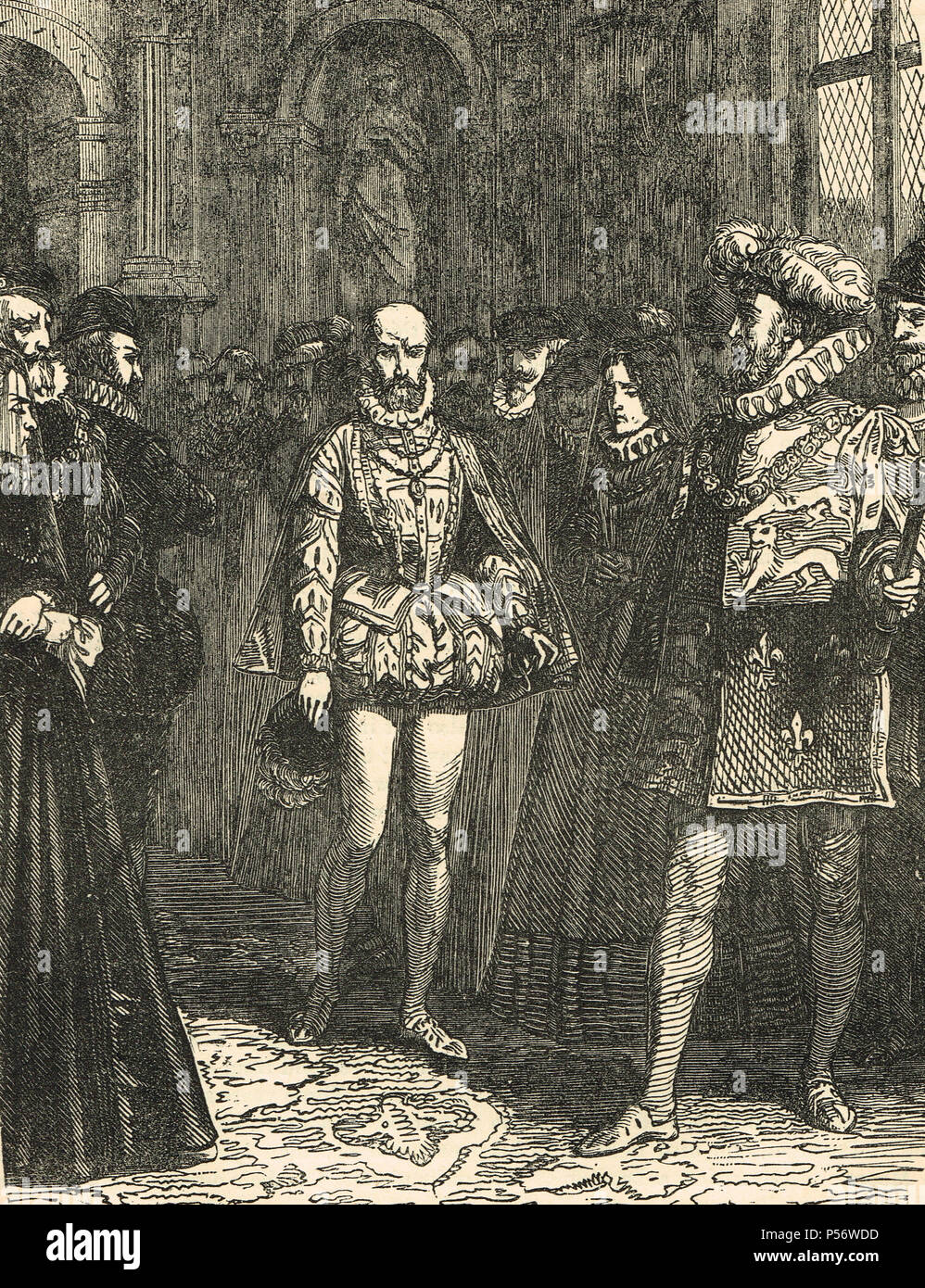The French ambassador, Michel de Castelnau, Sieur de la Mauvissiere, in the court of Queen Elizabeth I of England, sent by King Charles X, following The St. Bartholomew's Day massacre, 1572, to allay the excitement created

Image details
Contributor:
Historical Images Archive / Alamy Stock PhotoImage ID:
P56WDDFile size:
27.3 MB (3.2 MB Compressed download)Releases:
Model - no | Property - noDo I need a release?Dimensions:
2707 x 3523 px | 22.9 x 29.8 cm | 9 x 11.7 inches | 300dpiDate taken:
1896More information:
This image could have imperfections as it’s either historical or reportage.
Illustration from Cassell's illustrated history of England published circa 1896. Info from wiki: Michel de Castelnau. In 1572 he was sent to England by Charles IX to allay the excitement created by the St. Bartholomew's Day Massacre. The St. Bartholomew's Day massacre (French: Massacre de la Saint-Barthélemy) in 1572 was a targeted group of assassinations and a wave of Catholic mob violence, directed against the Huguenots (French Calvinist Protestants) during the French Wars of Religion. Traditionally believed to have been instigated by Queen Catherine de' Medici, the mother of King Charles IX, the massacre took place a few days after the wedding day (18 August) of the king's sister Margaret to the Protestant Henry III of Navarre (the future Henry IV of France). Many of the most wealthy and prominent Huguenots had gathered in largely Catholic Paris to attend the wedding. The massacre began in the night of 23–24 August 1572 (the eve of the feast of Bartholomew the Apostle), two days after the attempted assassination of Admiral Gaspard de Coligny, the military and political leader of the Huguenots. The king ordered the killing of a group of Huguenot leaders, including Coligny, and the slaughter spread throughout Paris. Lasting several weeks, the massacre expanded outward to other urban centres and the countryside. Modern estimates for the number of dead across France vary widely, from 5, 000 to 30, 000.